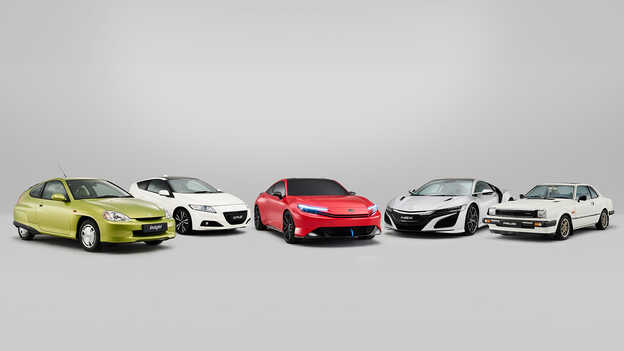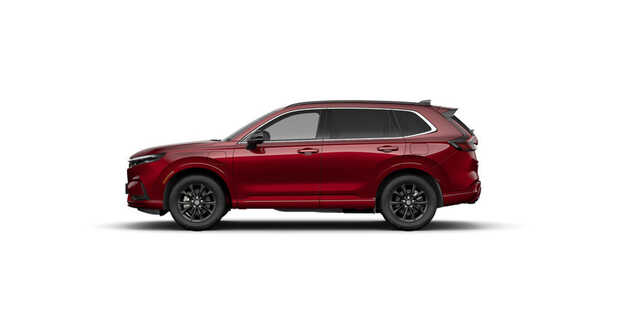Hybrid Car Charging FAQs
Curious about how hybrid car charging works? Whether you’re considering a plug-in hybrid or driving one already, understanding your charging options and best practices is essential. Our guide explains everything from charging at home to using public stations.
Do hybrid cars need to be charged?
Yes. However, while hybrid cars are known for using two different energy sources (a combustion engine and an electric battery) they don’t all charge the same way.
In a self-charging hybrid car, the internal combustion engine drives a generator that recharges the battery as you drive. The battery is also charged using regenerative braking, which captures waste energy as the car slows down. They don’t need to be plugged into a main to be recharged.
A self-charging hybrid car doesn’t need to be plugged into a mains to be recharged. A plug-in hybrid electric vehicle (PHEV) as the name indicates, needs to be plugged into a charging point to fully charge the battery. However, it can self-charge to some extent and also benefits from regenerative braking.
How do you charge a plug-in hybrid?
The simplest, but slowest, way to charge a plug-in hybrid is to connect the car to a standard 3-pin socket using a special cable called an EVSE. With this, you can charge your plug-in hybrid car battery at home by connecting it to your domestic power supply just like a mobile phone. You could also install a hybrid car charging station at home, which will increase charging speeds. For those without off-street parking, some local authorities are installing on-street hybrid charging stations.
Public charging stations make it easy and convenient for you to charge your electric or hybrid vehicle when out and about. They can reduce range anxiety and keep you topped up as and when you need it. While public charging is typically more expensive than charging at home, the convenience makes it worthwhile. And in some cases, you may even find free public charging stations, such as in some supermarket car parks.
Often called a hybrid charging ‘station’, these clusters of charging bays can often be found in the corner of motorway services or attached to large car parks. With the constant rise in hybrid and electric vehicles on our roads today, hybrid charging stations continue to be built and grow in popularity.
How long does it take to charge a plug-in hybrid?
The time it takes to charge a plug-in hybrid depends on the size of the battery, how much energy has been used and the power output of the hybrid charging station. The power output is measured in kilowatts (kW). Generally, there are four types of charging available:
- Slow (up to 3kW)
- Fast (7-22kW)
- Rapid (25-99kW)
- Ultra-rapid (100-350kW)
The slowest chargers will have a plug-in hybrid fully charged in around 5 hours. These are usually the most affordable units and are ideal for charging overnight or while you’re at work.
How much does it cost to charge a hybrid?
The cost to charge a hybrid car will vary depending on where you are. Public charging points can often come at a small cost that is far less than filling a car with petrol or diesel. Whether charging at home or in public, factors that will affect how much it costs to charge a hybrid car include:
- The current price of electricity
- The size of the battery
- Individual consumption
- The time of day – when charging at home, you can often benefit from cheaper tariffs at off-peak times
- The type of public charger you use / how quickly you need to charge
Do plug-in hybrids charge while driving?
While plug-in hybrids do charge while driving, this is nominal and will never completely replenish the battery. A plug-in hybrid’s bigger battery means it can drive for longer, it also means that a plug-in will need a hybrid charging station or another power source to completely replenish the battery.
What happens if you never charge your plug-in hybrid?
Whether it’s self-charging or a plug-in, all hybrids run on their petrol or diesel engines even if the battery is depleted. That means if you’re unsure where to charge a hybrid car while travelling, you won’t be stuck when the battery runs dry.
Nevertheless, running out of fuel will affect hybrids differently. If driving a self-charging mild hybrid, you will not be able to drive without fuel. In a full hybrid, you may come to a stop after a short distance—typically around 1 kilometre—as the battery holds only a small amount of charge. With a plug-in hybrid, you can continue to drive on electric power for a longer distance, typically between 30 and 80 kilometres, if fully charged.
Can you charge a hybrid car in the rain?
Yes, you can charge a hybrid car battery in the rain – that’s because hybrid cars are designed to withstand rain and water intrusion. Whether it’s charging, driving or keeping your hands warm, your plug-in or self-charging hybrid will continue to operate safely in wet weather.
Related reading
Honda Hybrid Range Overview
20.11.25
|
10 min
The History and Legacy of the Honda Prelude

05.09.25
What is regenerative braking and how does it work?

14.04.25
Why choose a Honda hybrid SUV?

09.04.25
Are hybrid cars worth it?

27.03.24
Holidays Are Coming: How To Drive Safely This Summer

26.03.24
The Honda CR-V: a perfect companion to any caravanning staycation

